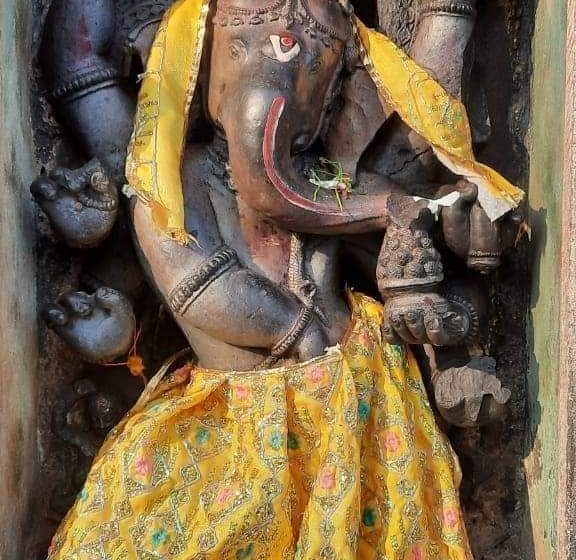
Unique and Famous Dancing Ganesh Idols of Odisha
Talking about the sulptural remains of dancing Ganesh idols of Odisha…….Whenever we take a gander at the mythology/ folklore which has been conveyed forward generation after generation in ‘Bharatvarsh’, there are various portrayals of different divine beings and goddesses indulged in dance and playing musical instruments. Lord Krishna is depicted as a prominent performer who charms the entire world by playing his flute. Lord Vishnu is seen holding a conch. Goddess Saraswati is the goddess of knowledge and learning, who is seen holding a Veena( a classical Indian music instrument) as an integral part of Her iconography.God Narada plays Veena and there is an intriguing episode connected with his melodic adequacy. However, keeping aside the music instruments, when we center around dance, we find for the most part the Saiva Gods truly do have their incomparability. It is said that when the mass extinction draws near, God Shiva gets indulged in ‘ Tandava Nritya’( a sort of ferocious dance the God Shiva is known for). Shiva plays the instrument called ‘ Damru‘ while dancing.Like God Shiva, His partner goddess Parvati is likewise competent in dancing and her dance is called ‘ Lasya‘.Besides the dance of Shiva, Lord Ganesh is the most chosen deity to be depicted in his dancing pose in the iconographical texts, sculptural portrayals and paintings. Yet dancing Ganesh figures are less numerous in comparison to Lord Shiva, the greatest exponent of “Gandharva Veda” . Lord Ganesh is also referred as NataGanesh, in a very similar fashion as His father Lord Shiva as Nataraj.
Anyway , the portrayal of the NataGanesh idol( as the presiding deity) is surviving unharmed in hardly any free temple . One is situated inside the Jagannath temple compound ( Puri) and another is inside the areas of Lingaraj temple complex( Bhubaneswar), which is in a seriously harmed state. Iconographical texts endorse that the dancing Ganesh idol ought to have eight hands among which seven ought to hold danta,ankusha, koothara,modaka, pasa, anguliya & valaya and the excess one is to stay free to show different postures of dance. The left leg is to twist marginally resting on the Padma Pitha or lotus pedestal and the right leg being somewhat bowed and brought up in the air. In any case, all the NataGanesh pictures don’t have entirely the same attributes as portrayed in the silpa texts. It has additionally been observed that four armed NataGanesh idols in a few different spots of India yet not in Odisha.
From the seventh century A.D onwards, Lord Ganesh interestingly showed up in the Odishan temples. The sculptures of Lord Ganesh as found in the temple walls of Odisha fall into three classifications, i.e., Asina (situated), Sthanaka (standing) and Nrutya (dancing). The Asina Ganesh is found in Odisha from the seventh to eighth century A.D. The standing Ganesh is very uncommon.
Here I am posting the images of three dancing Ganesh idols of Odisha which catch everyone’s fascination.
Image I: A very beautiful dancing Astabhuja ( eight hands) Ganesh, though some of its limbs are broken , is being worshipped in the southern niche of Garteswar temple Algum,Sakhigopal,near Puri.Odisha,India, Image: Srikanta Singh
Image II: This Astabhuja Ganesh is seen in the Kichakeswari temple wall , Khiching, Odisha.This is viewed as the ‘jewel of Khiching craftsmanship’ for its magnificence and tastefulness.

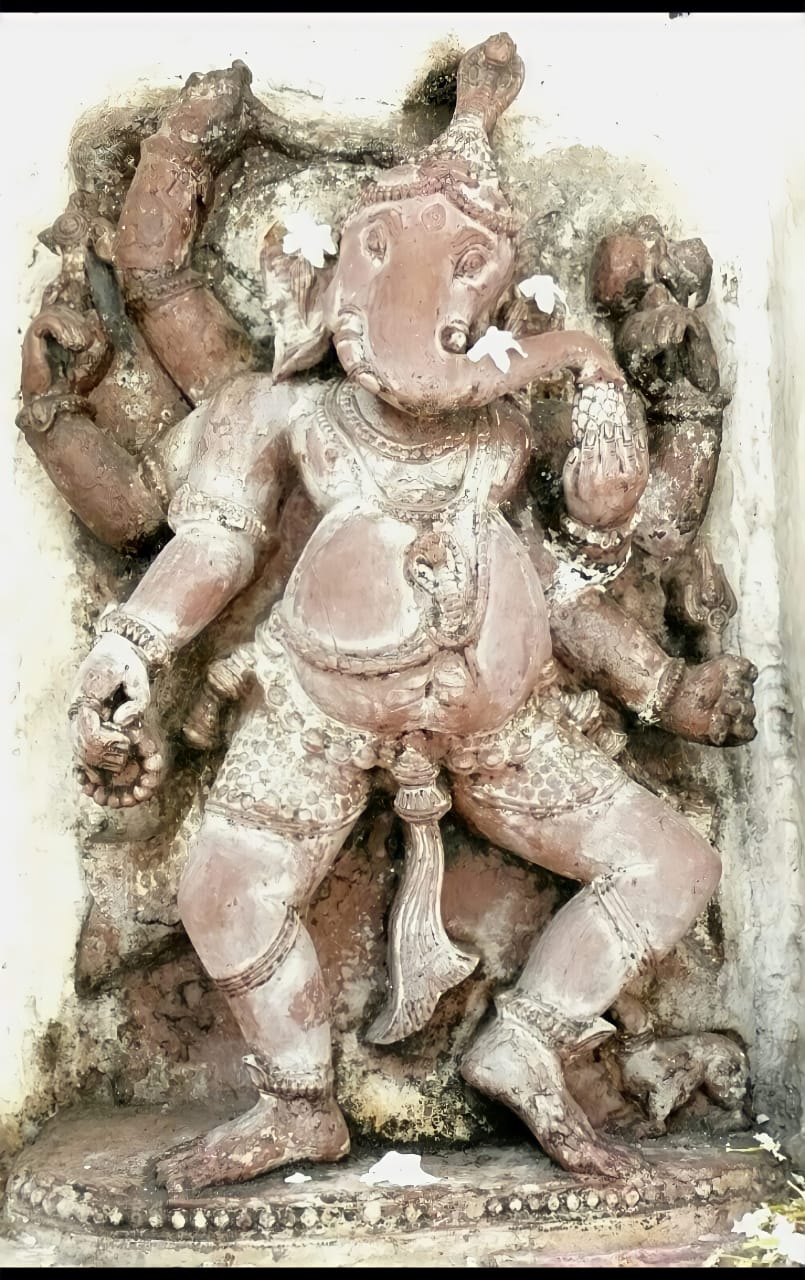
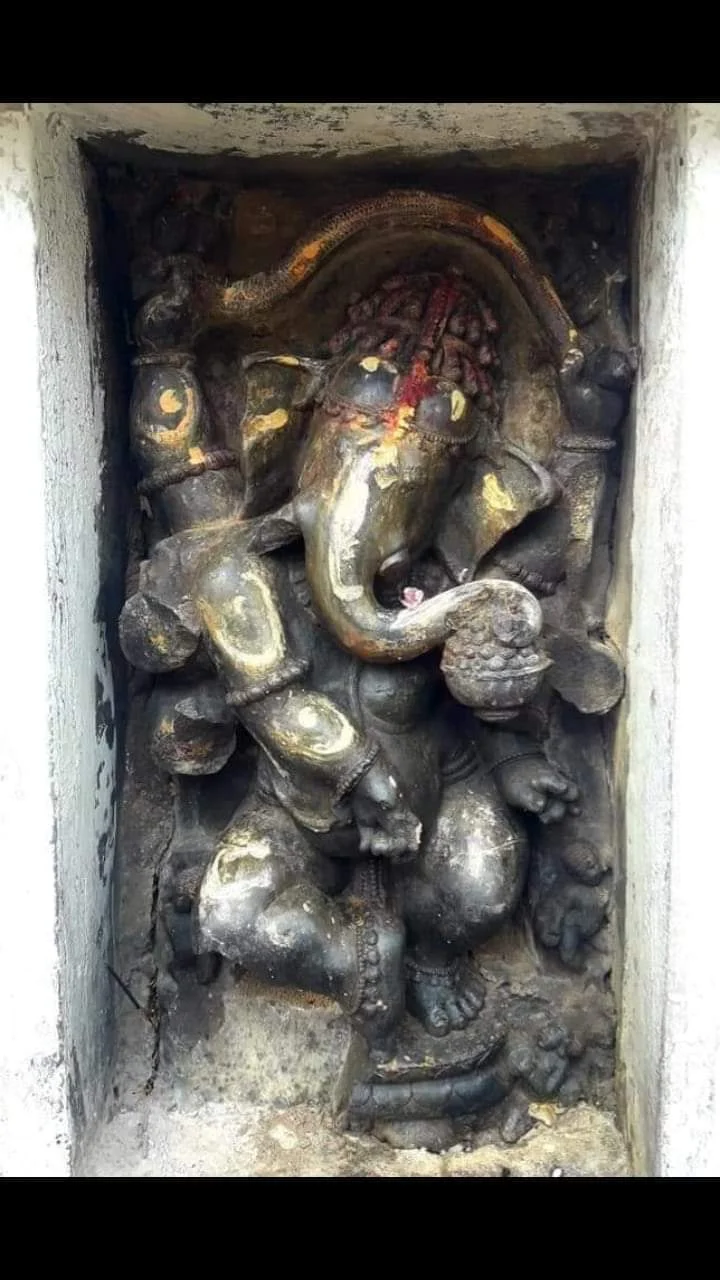
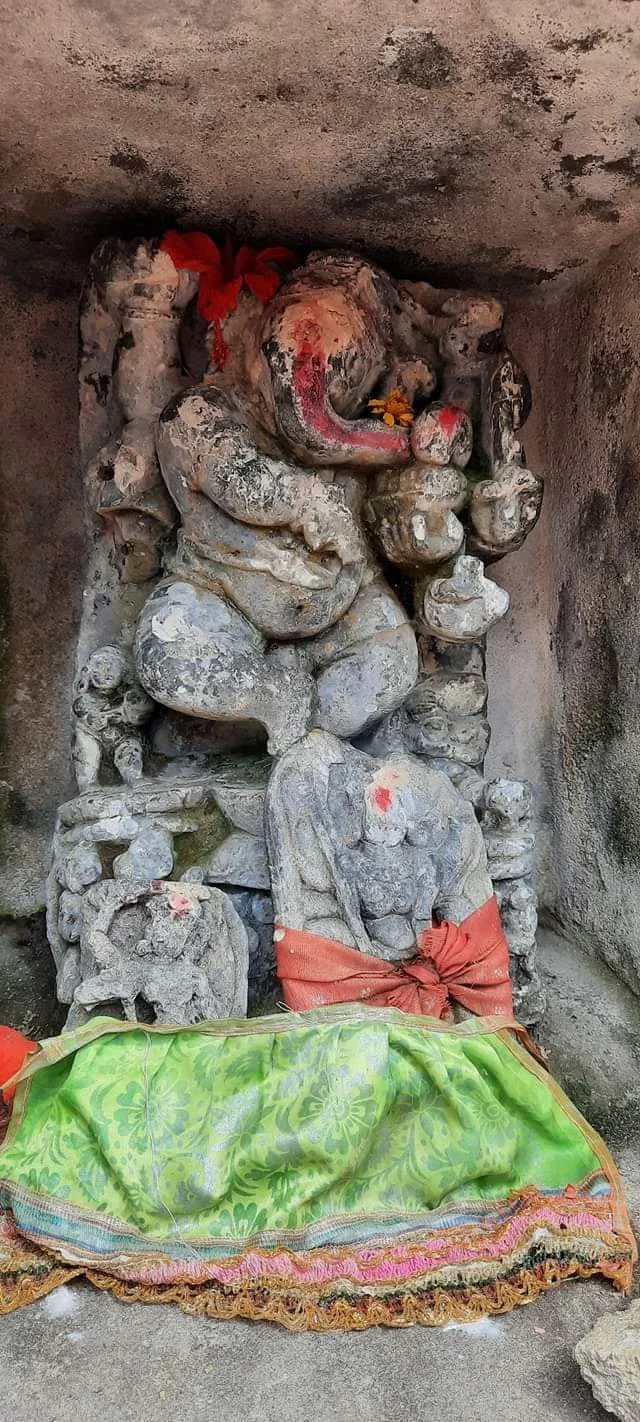
Image : Srikanta Singh
Dancing Ganesh in Hoyashaleswar temple, Halebidu, Karnataka, Image source: Wikimedia commons

Pratihara Period
10th Cent CE
At present in “The Art Institute of Chicago…

Now in Indian national museum Kolkata
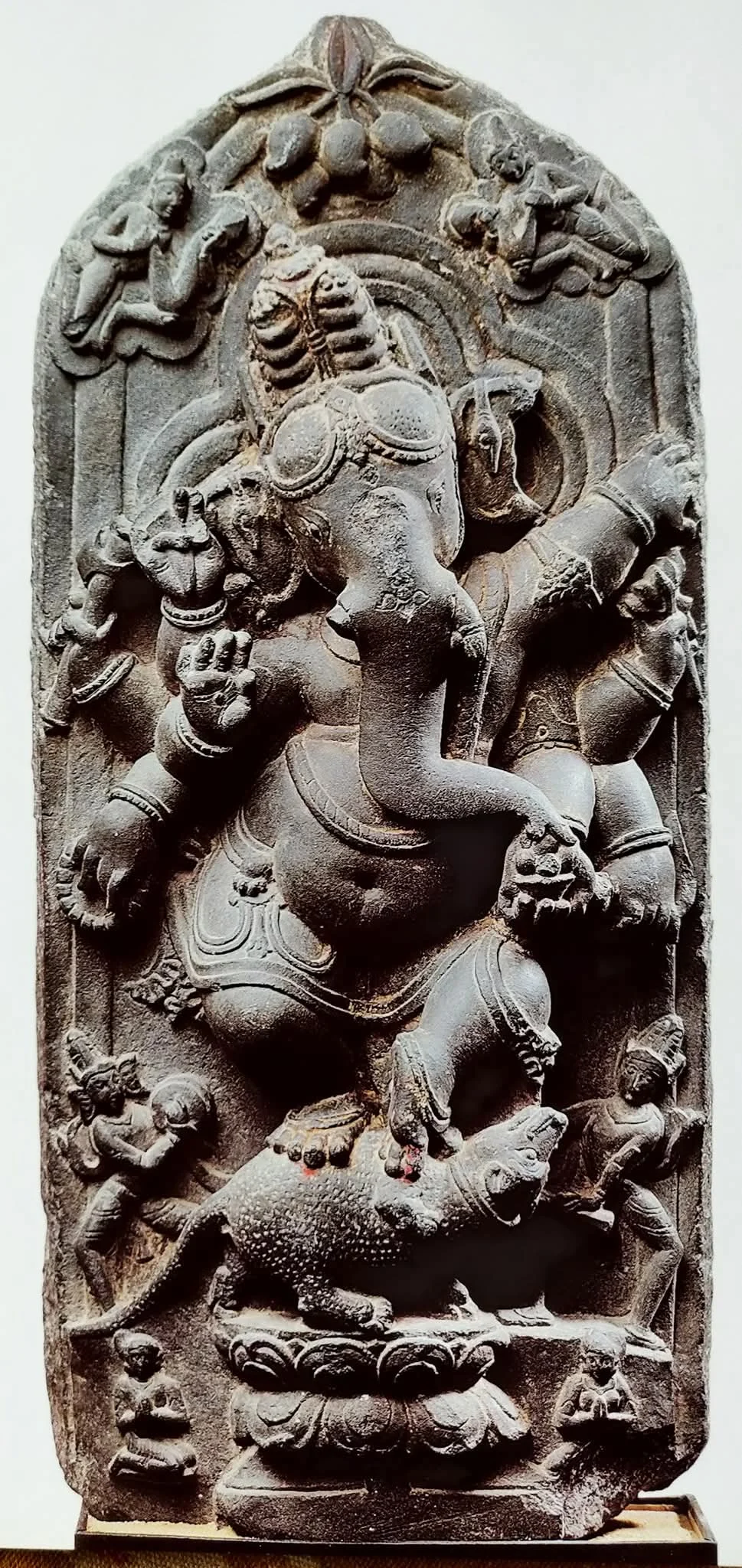
Stone, Pala, 10th century,
Staatliche Museum of Berlin.

statue.
17th century, Nepal

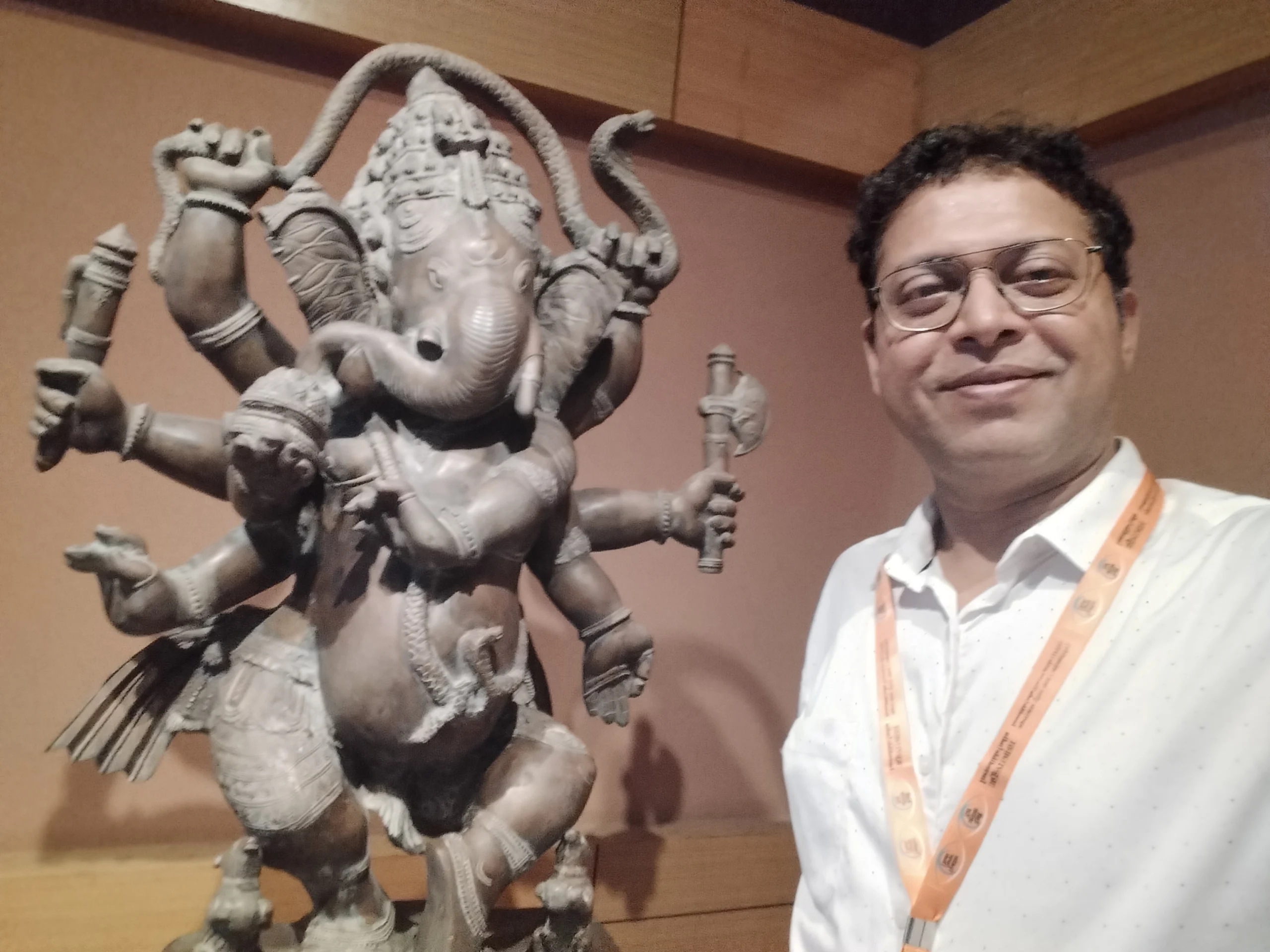
Here I would like to post the image of a rare sculpture of “Nata Vishnu” ( Dancing Vishnu) or “Natya Vishnu”. This is preserved in the premises of ‘Pancha Basadi’-jain temple Humcha, Sivamoogga, Karnataka, India

Pattachitra of dancing Ganesh
Modern sculpture of dancing Ganesh available plentily for sale.
Dr. Manoj Mishra
lunarsecstasy@gmail.com

2 Comments
Thanks for such a nice and informative writing on the dancing Ganesha idols. It profited me much in preparing an article on the Nata Ganesha idol at the Harishankar temple in Balangir district of Odisha. Thanks again.
Thanks your information 👍🙏